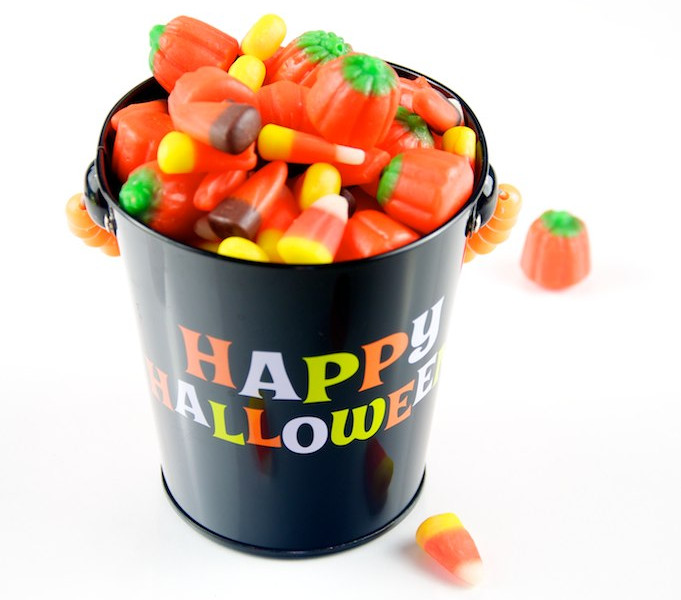How Math Can Help Make Your Halloween That Much Spookier and More Delicious

October has rolled around once again, which means one thing and one thing only for millions of kids all over the country: Halloween is right around the corner. For many youngsters out there, Halloween is a day that is about a lot more than just getting to dress up as their favorite costumed superhero or about trying to scare one another. It's about candy. More specifically, it's about getting more candy than your friends so that you can enjoy sweet, delicious bragging rights for another 365 days.
If you've got a little one in your life who wants to make sure that they start November 1 with a sack filled to the brim with every last piece of candy they could find, you'll want to keep a few important things in mind.
How to Get the Most Candy
Such a large part of Halloween success involves going to the right neighborhood in the first place. In many neighborhoods, a sign of whether or not a house is giving out candy is the status of their porch light. If their porch light is on, trick-or-treaters are welcome. If it isn't, they aren't. As a parent, drive around for a bit until you see a block or two with the largest number of porch lights on to help maximize candy volume all night long.
Additionally, you'll want to head to neighborhoods that have a reputation for being generous when it comes to candy. No kid wants a pillow case filled with candy corn - they want full size candy bars, darn it! Ask other parents for tips on picking out the right neighborhoods and you'll find that a large part of the hard work has already been done for you.
Using Math to Help Carry the Most Candy
For parents, Halloween is a great opportunity to not only pump your kids full of candy but also unlock a powerful new learning opportunity at the same time. There are two main mathematical equations that you'll want to teach your kids as All Hallow's Eve approaches once again - one that will let them predict how much Halloween candy they will get in general, and one that can help them figure out how much Halloween candy their container will store so that they can develop the best plan of attack for the neighborhood.
Halloween Candy Container Capacity
If you want to find out how much candy will fit in a particular container, the equation that you would use is the Halloween Candy Container Capacity equation.
To begin, determine exactly what type of container your kids will be taking with them out in the neighborhood. If they're using a small bucket, for example, assume that the average capacity is about 0.5 gallons. A standard pumpkin-shaped container, like the type you've probably seen at Walmart, usually has a capacity of around one gallon. An actual bucket that you might find in your garage would have a capacity of two gallons, while the average pillow case can hold about six gallons.
Next, use the average size of the three main types of candy bars that people are likely to give out to determine the value of the variable "f." Mini candy bars are about six grams, while "Fun Size" candy bars are about 17 grams. Full size bars, which are the proverbial Holy Grail of all trick-or-treaters, are about 52 grams.
By taking the average size of the type of candy you predict you'll receive (which will vary depending on the type of neighborhood that you're going to) and multiplying it by the type of container you have, the number you're left with is the approximate amount of candy that will fit in that particular bucket or pillow case.
Predicting Your Haul
The equation, , that you would use to try to predict how much Halloween candy your kids will end the night with is a bit more complicated, as there are a number of variables that you have to consider. The equation itself is "Candy haul - f(GB, ToT)."
The variable GB will vary depending on whether you're going to a neighborhood that tends to give out a lot of quality candy items, or whether you're going to a neighborhood that is notoriously stingy. "ToT" stands for the total number of houses that your little ones have visited.
The equation operates on the assumption that a generous neighborhood will give you more full size and "Fun Size" candy bars, while a cheap neighborhood will tend to stick with the minis.
Once you've nailed down your variables, plugging that information into the equation itself is relatively straightforward. Multiply the average handful of candy for one house in your neighborhood by the total number of houses you've visited. The answer you're left with will tell you how many minis, "Fun Size" and full size candy bars your kids will walk away with at the end of the night!
As a parent, however, one of the most important things to consider about Halloween is safety. Always make sure that you're going trick-or-treating with your kids, especially if they're younger. Proper supervision is important. It's also necessary to make sure that you're paying close attention to not just what type of candy is being given, but who is giving it in the first place. Doing so will help make sure that your little ones have the time of their lives and stay out of harm's way all night long.
- Comments
- Attachments
No comments |
